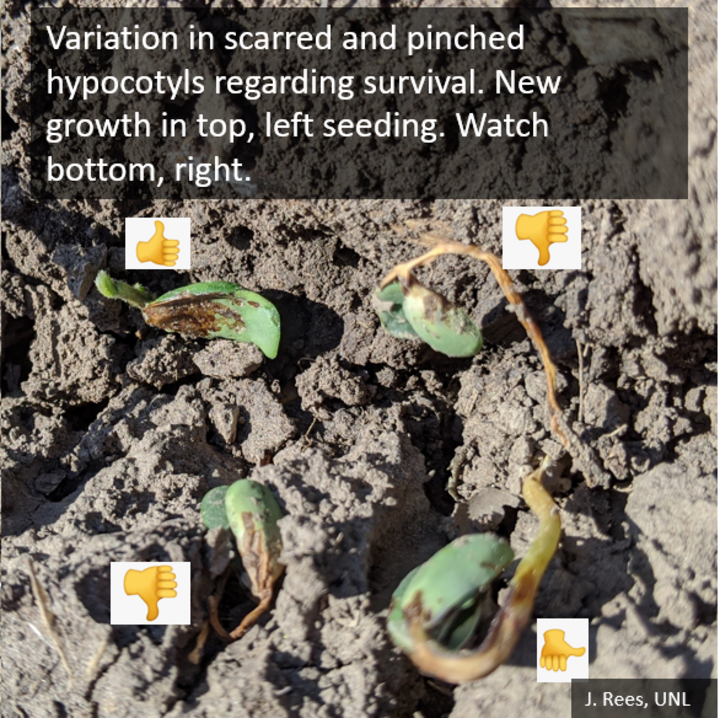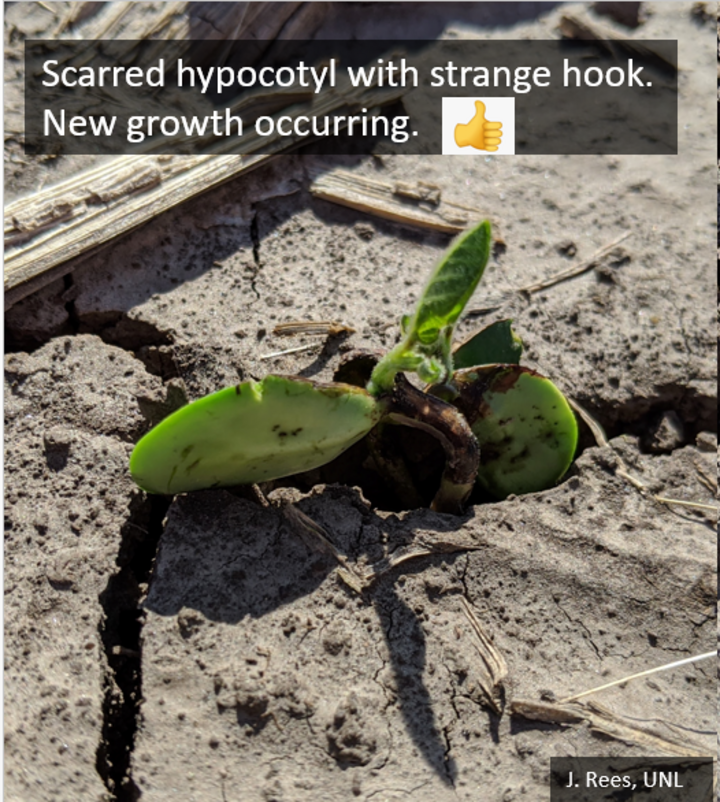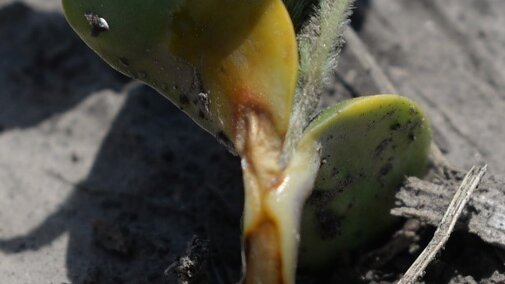Background:
The past two weeks, we’ve received a number of calls regarding injured soybean plants during emergence. Additional questions include “What caused this?” and “Do I need to replant?” The following is what we’ve seen thus far.
Answer:
The most common problem we’ve seen is damage from PPO-inhibiting herbicides applied pre-emergence from products containing sulfentrazone, flumioxazin, or saflufenacil. These products can all cause injury in cool, wet conditions at emergence. Certain PPO-inhibiting herbicides such as products with sulfentrazone (such as Spartan) as well as when sulfentrazone is a part of the pre-mix products (such as Authority brand herbicides, BroadAxe XC, Sonic) have to be applied within three days after planning soybean. If these herbicides are applied after 3 days of planting, it may cause injury.
As we think about May, it was a cool, dry month until May 21-25. Prior to May 21-25, when rainfall wasn’t received on a field and pivot irrigation was available, pivots were run to activate herbicide. Ideally 0.5-0.75” of rainfall or irrigation is necessary to fully activate herbicide.
Some fields received 0.2-0.4” of rainfall to begin the activation process and then the soil began cracking for beginning soybean emergence. Irrigation and/or rainfall received during this time can wash the herbicide into the seed row causing damage to the seedlings (Figure 1). In other fields, farmers waited to apply irrigation and no rainfall was received. Rain events in the May 21-25 could have moved herbicide into seed rows or splashed already-emerged plants causing burning/dark spots on leaves.
The damage we’re seeing varies from field to field as fields varied in planting, emergence, and rain/irrigation events. Damage to the side of the hypocotyl where the hook was exposed at the soil line appears ‘burnt’ (Figure 1) and can later become pinched, killing the seedling. If the hypocotyl is burned or scarred on one side but not the other, the seedling most likely will live. We are typically seeing new growth on these seedlings. While that is good to see, be aware that the stems of these plants may become more brittle and result in potential stand loss during the growing season.
Some seedlings may have been impacted a couple of times which can be seen as damage to the hypocotyl below the cotyledons and again towards the soil line. Some of the damage at the soil line is being confused with Phytophthora root rot. One way to differentiate the two is to dig up the seedlings. Phytophthora root rot will also have dark, discolored roots, which we don’t see with PPO-inhibiting herbicide injury (Figure 2).
A Pioneer agronomist informed Jenny that some soybean varieties are more sensitive to PPO–inhibiting herbicides. The sensitivity is seen once the plant has fully emerged and is characterized by stunted plants that have a chlorotic appearance.
Some have confused the ‘halo’ effect of the ILeVo seed treatment occurring on cotyledons with PPO injury. There will be no additional damage to the hypocotyl or leaves beyond the cotyledons with ILeVo (Figure 3).
While seed corn maggots were an issue in isolated soybean fields a few weeks ago, they have since pupated and are not the problem now. Another generation of adult flies will be emerging soon (Figure 4).
Crusting has been an issue in some fields with heavy rains and high winds since. Where available, some pivots are running to help alleviate this. This article highlights Considerations after Crusted Soybean.
Considerations:
- Work with your seed dealer to understand which varieties are more sensitive to PPO-inhibitors.
- Know your soil type and decide herbicide rate recommended on label as herbicide rates vary between heavy and lighter textured soils.
- Consider applying PPO-inhibiting herbicides a week prior to planting, not at planting.
Being June, replant decisions are extra difficult. For the most part, we haven’t seen whole fields in need of replant, just end rows or portions of fields. If one needs to replant, we recommend slotting in a reduced population next to the adjacent row. This has tended to work well in the part of the State that Jenny serves; however, we’ve heard there’s been mixed results in other parts of the state. We recommend leaving a soybean stand of at least 50,000 plants/acre that is fairly uniform. Missing plants in one row can be compensated by an adjacent row if plants are present. Fields viewed last week at these populations look entirely different this week as trifoliolates develop and the beans start branching out. Please see the following article for Soybean Replant Considerations. When in doubt, you can also test replanting for yourself using this on-farm research protocol.
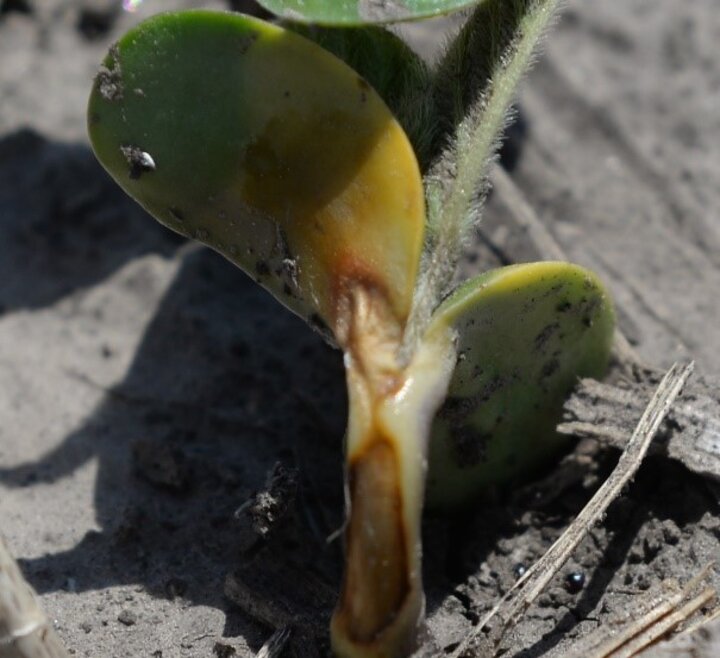

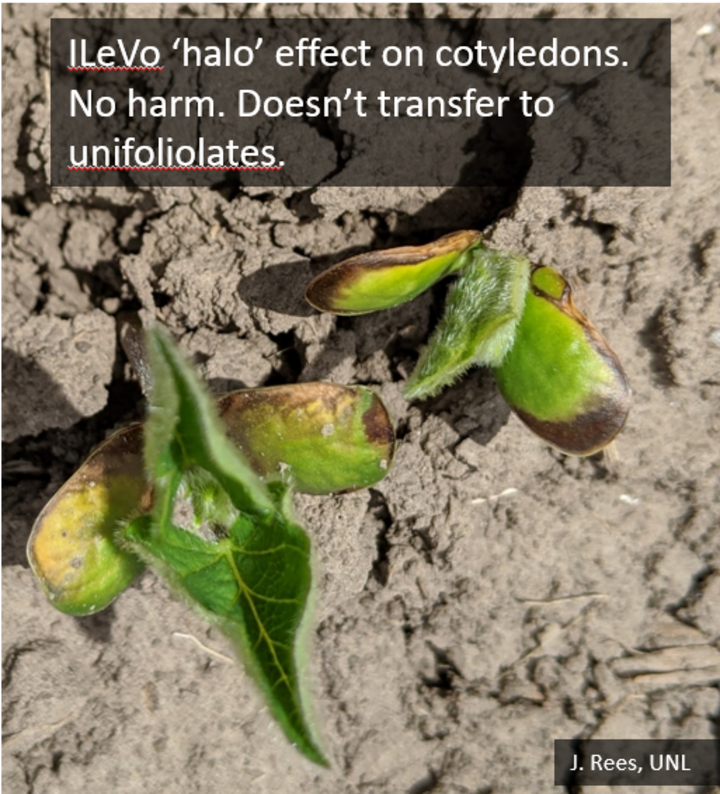
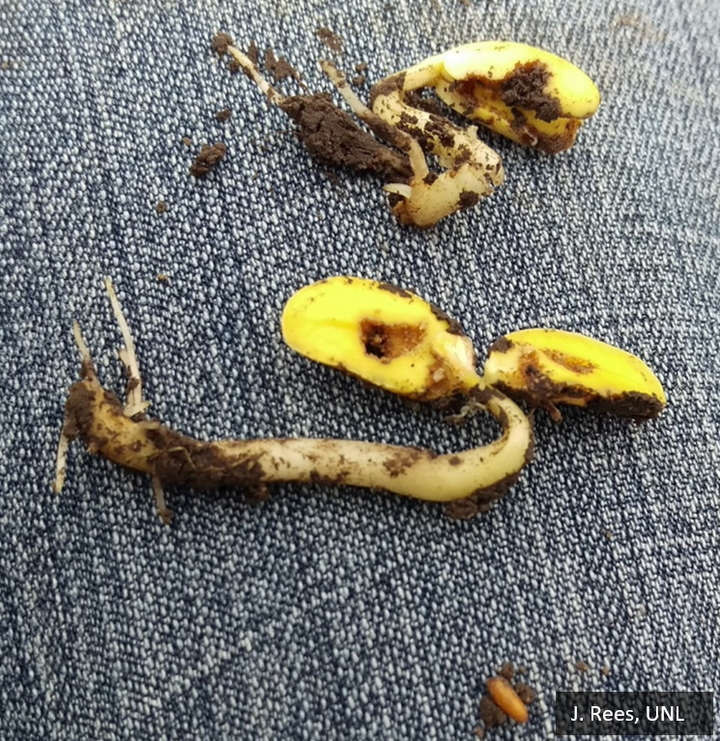

Observations:
The following pictures are shared as observations from the field in hopes they can be of help to our readers. Thumbs-up and –down emojis indicate potential survival.

